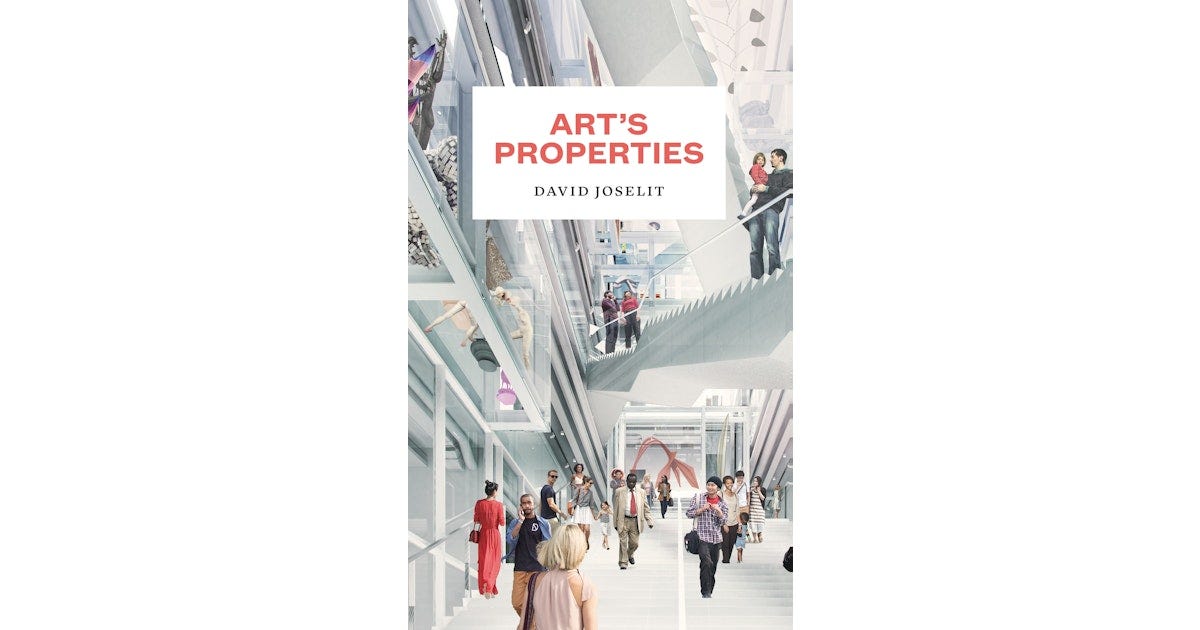Tell us what you read in 2024 that …
… tapped into an emotion you’ve been wrestling with this year,
and
… was a balm,
and
… you’d recommend to other arts writers,
and
… had you rethinking art history.
Art’s Properties by David Joselit
In my career as an academically trained philosopher and as a professional art critic, I have been wrestling with the values I have inherited between the ideals of freedom and the uneven practical stakes of political identity.
Since graduate school, I have been thinking about the character of the human species, both with and against, elucidations by European thinkers in my areas of specialization: aesthetics and critical philosophy of race. The art historian David Joselit bridges these two areas of study, which continue to remain dear to my soul, that is to my own self-understanding, by examining the history of property as it pertains to artists of modernity and contemporary life.
On Joselit’s account of art’s circulation brokered vis-à-vis the dealer-critic system of Monet’s era until now, it is perhaps instructive to bookend the historian’s deft analysis by way of the theft of cultural objects by Napoleon Bonaparte in the early 19th century and the current rise of a new class of 21st century “free-market “ artists’ agents (selling objet d’ art directly to collectors and bypassing the cultural authority of the museum).
It is imperative to understand where we came from in order to better understand where we are going: What initially drew me toward thinking about art and aesthetic theory is an attempt at understanding the poor justifications for how human beings could have been treated as mere objects and the disastrous ongoing consequences of such rationales buttressed by capital.
It was a balm to read this short and urgent primer on the history of art as it pertains to self-possession: a category of modern life that makes this book essential for all who care to understand the stakes of culture today. Joselit dedicates Art’s Properties (Princeton University Press, 2023) to his students, and I will continue to recommend it to my own, as well as to my colleagues in the art field, and to anyone desiring to know why art matters.




